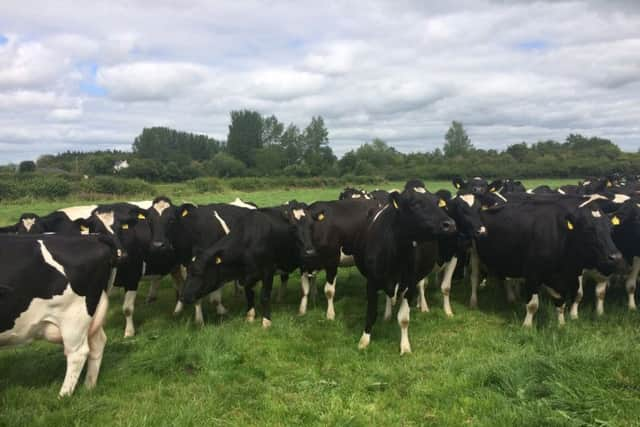Fly control for dairy cows '“ start in time
and live on Freeview channel 276
Flies are terribly annoying for both man and beast. They can cause a state of unease in the parlour leading to occasions of flying clusters. Their irritation at grass interferes with normal grazing activity and has been shown to cause a reduction in milk and butterfat production.
Their impact does not end there. They are also capable of transmitting viruses, bacteria and certain parasites. Flies are implicated in the spread of common diseases such as “summer mastitis” and “pink eye”.
Different types of flies in Ireland


l House or stable flies
l Face flies
l Head flies
l Warble flies (rare)
l Blowflies
Advertisement
Hide AdAdvertisement
Hide AdFace flies are the top offenders for annoyance of cattle at pasture. Face flies and head flies are linked to the transmission of Moraxella bovis the bacteria responsible for “pink eye” and there is strong evidence to suggest head flies are also involved in the spread of “summer mastitis”.
Control
Removing or at least reducing the source of infection is the most useful approach in controlling stable flies. Areas of manure should not be allowed to accumulate as these areas provide the perfect environment for flies to breed. Avoiding use of fields bordering woodlands has been advised in the peak risk period (June-September) where possible.
Pour-on and spray preparations, repellent creams together with insecticide impregnated ear tags are widely used to reduce fly annoyance. Pour-on products applied at the dosing intervals recommended by the manufacturer will also aid control. It is best practice to start fly control early in the season; although fly numbers may seem low they will be laying large numbers of eggs.
To ensure correct product usage read the guidelines supplied by the manufacturers and adhere to instructions regarding administration, dose, frequency of use and withdrawal periods.
Butox Swish pour-on
Advertisement
Hide AdAdvertisement
Hide AdThis product contains deltamethrin. In cattle it is indicated for the control of flies and lice. It is advised to pour the dose along the animal’s spine from the base of the head to the tail.
The person applying should wear gloves. It is safe to use during pregnancy and lactation. Butox PO has 20 day meat and zero hour milk withdrawal periods for cattle.
For fly control a single application provides protection for eight to 10 weeks (depending on the infestation, fly species and weather) at which time treatment should be repeated. With your cows’ best interest at heart - start fly control in time this summer.